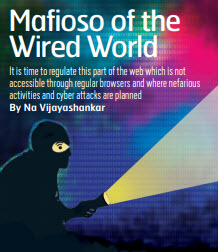There is a big relief for people like us that Mr Modi is back. The relief is more because the alternative was a sure recipe for disaster.
But we the people of India are not content with the relief. We look forward to accelerated positive developments that can take our country forward. During the last few months of Modi 1.0, it appeared that Mr Modi was getting exhausted. Afterall the vicious campaign of the opposition was taking its effect on his self confidence. As a result the Government slowed down on many fronts during the last quarter of the 2018 and upto now.
The Tukde Tukde Gang led by advocates who were only interested in disrupting the society was well supported by the highest Court of the land and led the country into a “Temporary Policy Paralysis”.
This created a fear that if Mr Modi did not come back, the country would be destroyed by the opposition politicians supported by PIL advocates who could make the Supreme Court dance to its tune. Now with the renewed support of 353+1 members of the Loksabha, Modi 2.0 is stronger than ever before and hence there is a temporary feeling of relief that the worst is over.
But has Mr Modi himself recovered from his exhaustion and retained his vigour for an immediate return to fighting against the anti national forces or has been softened with the bombardment of the opposition over the last year, needs to be watched.
During the last few months, I am aware that my professional image was a little dented by my open expression of support to Mr Modi to the extent that in the social media, I was branded by trolls as Modi Bhakt.
But in the interest of the nation, it was felt necessary for professionals like me to take a position openly and oppose the pseudo-seculars spread all over unmindful of the criticism that may come through. It is possible that this could have also adversely affected some of my professional work as well.
Now it appears that the difficult period is over and the Indian electorate has silently brought Mr Modi back to power with a higher majority than before. Presently, we are waiting for the next step of cabinet formation and subsequently the roll out of the Modi 2.0 promise.
Like the Justice Srikrishna concept of “Data Fiduciary”, where we can expect the Data Controller to do more than what is contained in the consent because he is a trustee, Mr Modi is the “Citizen’s Aspiration Fiduciary”. What this means is that irrespective of what is stated in the manifesto etc, we the citizens expect that Mr Modi will act in such a manner that the Indian Citizen will benefit by his Governance in every aspect. The world is dynamic and hence the aspirations of people may also undergo a change.
As a Citizen’s Aspiration Fiduciary, we expect Mr Modi to keep doing things that are good for the citizens of India as we go forward. Hence we need to keep presenting our thoughts and ideas to the Government and Naavi.org will continue to do this in the domain of Data Protection, Cyber Laws, Information Security and related areas.
I thought I should wait to comment on the agenda for Modi 2.0, until the cabinet formation is over, but some media elements appear to have already got their act together and started their campaign. In the Cyber Crime domain we know that whenever technology moves, it is the criminals who first make use of the new developments and the security professionals need to catch up.
Similarly, those who were opposed to many of the policies of Mr Modi in the earlier regime are the first off the block to start lobbying in the new regime even before it is formally in place. I already see planted stories and comments in the media/social media on certain policy aspects as well as on who should be in the cabinet and what should be the portfolio allocations.
Therefore we also need to jump in and not allow the narrative to be one sided. As followers of this blog have recognized in my last post on the EVM, I have a tendency some times to express my views in advance to pre-empt the counter view point gaining ground. May be some of my apprehensions are therefore considered as speculations but I feel it is better to err on the safer side and start the counter discussions before it is too late.
I have been drawn into the political discussions since around the days of emergency in 1975. Though these were suppressed during my career as a Banker in the public sector, it obviously came back when I was free from employment obligations.
People who have followed my other site www.aifon.org.in are aware that I have followed the electoral politics from time to time and expressed support for Modi and his predecessors in BJP. Though I consider that Mr Modi is the best thing to happen to Indian politics as predicted by Nostradamus, I will continue to be the Chowkidar whether or not the prefix is still with my Twitter Handle or not.
In pursuance of this national responsibility within the chosen professional domain, I will try to highlight some of the policy decisions that I consider as needing special attention of Modi 2.0 government. In this series we will discuss the need for Bitcoin Ban, the PDPA Bill, the Intermediary Guidelines etc. though it may be slightly uncomfortable to some of the professionals.
This is a disclosure before I publish some of my view points on the unfinished agenda.
Naavi







